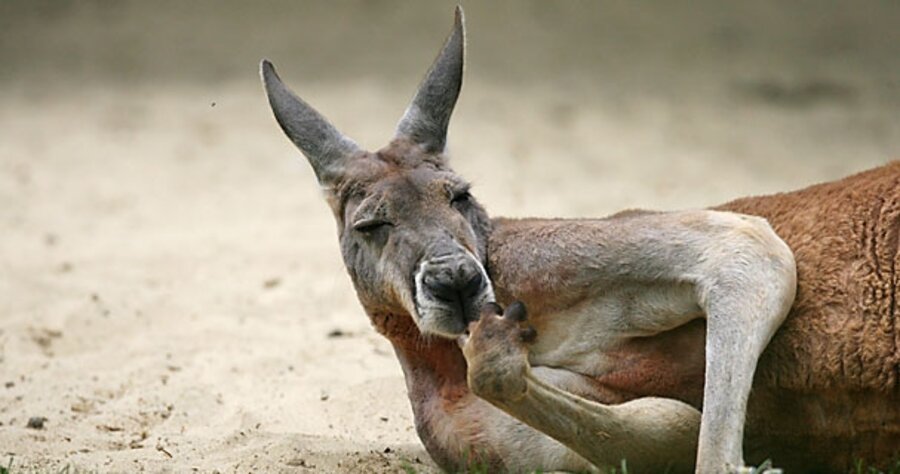Save the climate: Eat a kangaroo
Loading...
If Australians were to give up farming sheep and cows for meat and eat kangaroos instead, the country would significantly reduce its greenhouse gases, a new study has found.
Writing in the latest edition of the international journal "Conservation Letters," Australian ecologists George Wilson and Melanie Edwards note that belches from sheep and cattle produce lots of methane. Kangaroos have a different digestive system, and thus produce less of the powerful greenhouse gas:
Methane from the foregut of cattle and sheep constitutes 11% of Australia’s total greenhouse gas emissions (GHG). Kangaroos, on the other hand, are nonruminant forestomach fermenters that produce negligible amounts of methane. We quantified the GHG savings Australia could make if livestock were reduced on the rangelands where kangaroo harvesting occurs and kangaroo numbers increased to 175 million to produce same amount of meat. Removing 7 million cattle and 36 million sheep by 2020 would lower Australia’s GHG emissions by 16 megatonnes, or 3% of Australia’s annual emissions.
There are currently about 34 million kangaroos in Australia, according to the study. Raising that number up to the 175 million that Wilson and Edwards say is needed to sustain the country's rates of meat consumption could be achieved by decreasing sheep and cattle numbers.
The paper says that, with CO2 trading at about $36 per ton on European markets, the carbon dioxide equivalents saved from 2007 to 2020 would be worth about $580 million. This is not a strong enough incentive to get cattle and sheep ranchers to switch to the low-emission marsupials, the authors write, but they could be compelled to do so if required to purchase permits to remain with their current livestock.
But the strongest incentive, say Wilson and Edwards, would be the the greater profitability of kangaroo meat, whose production requires fewer fences and yards, as well as less parasite control. And unlike cattle, kangaroos don't have to be dehorned.
Such a switch could carry environmental benefits beyond greenhouse emissions. Reducing the number of hard-hoofed livestock could prevent soil erosion, protect vegetation, and improve water quality, the authors maintain.
Nevertheless, the authors acknowledge that persuading Australians to transform a national symbol into a staple food would require "large cultural and social adjustments." The kangaroo appears on the country's $1 coin and stands alongside the emu on the country's coat of arms.
Still, such cultural shifts are possible, argue Wilson and Edwards. The pair cites the growth of industries around the world – such as ranches for springbok in South Africa, red deer in Britain, and bison in the United States – that have successfully rebranded iconic national symbols as dinner.
Currently, most kangaroo meat is harvested under strict conditions and is often exported, where it enjoys popularity in Germany, Russia, Belgium, and France. In Australia, it is more often used as pet food.
Unlike most other meats, such as pork and venison, there is no culinary name for kangaroo meat. In 2005 the Kangaroo Industry Association of Australia sponsored a contest to come up with a euphemism to soothe squeamish diners. The winning entry, "australus," failed to stick.
[via Grist]





